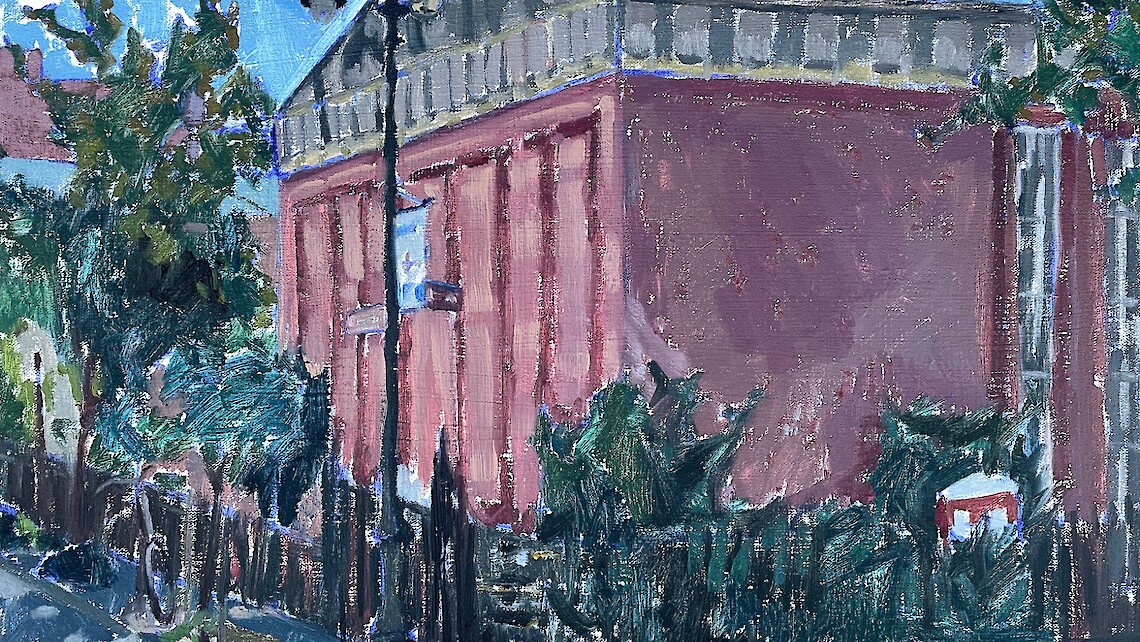Agustin Castilla-Avila & Herbert Mackinger's Cerro Rico
Agustin Castilla-Avila & Herbert Mackinger's Cerro Rico
7 July 2019
/Announcements
In Deutsche lesen
Leer en Español
RSF supports Cerro Rico, a new opera by Agustin Castilla-Avila and librettist Herbert Mackinger.
Cerro Rico - The Opera (Synopsis)
In order to arrive at a full understanding of the libretto, it is important to know about both the miserable social conditions prevailing in the mining region around Cerro Rico, a mountain near the Bolivian city of Potosi, as well as the myth of the ”Tio”, the “Lord of the Mines” that is still very vital among the local population (see the explanations below).
At the very beginning of the opera two miners are dragging the bodies of two of their coworkers out of the mine; they give a report on the incidents in the mine and complain about the terrible working conditions the natives have to endure underground. They also report of the cruel games, which the Tio is playing on them. He forces them to pay tribute in form of coca leaves, alcohol and cigars as they enter the mine. If they don’t give him his due respect or don’t abide by his rules, the miners could even lose their lives. One of Tio‘s strictest commandments is that neither women nor priests must ever enter the mines, since that would lead to the disappearance of the silver ore.
One of the miners, Yupanqui, is already suffering from the deadly lung disease (silicosis) despite his young age. His wife, Loma-Tika, is working above ground searching the waste piles for rocks containing silver ore. Since the couple has no sons who could help with the hard mining labor and since there are no employment alternatives, they are forced to let their daughter, Chaska, disguised as a male worker, help them in the mine in order to sustain their measly existence. Thus, Yupanqui has knowingly broken Tio’s strictest rule.
On this day Chaska has not reported for work as usual, and Yupanqui has to face the Tio all by himself, who presents him with the bill for secretly smuggling his daughter into the mine: “Yupanqui, I know all about you! … you owe me the ultimate sacrifice for this.” Yupanqui knows exactly: this „ultimate sacrifice“ can only be the life of Atipay, Chaska’s son, since he is the only male descendant of the family, the only one who could guarantee their survival, when he would once succeed them in the mine. Despite his love for Atipay, Yupanqui sees no choice but to sacrifice him: Tio’s law cannot be bent and his fury would be fatal for the family, perhaps even for the entire village.
Yupanqui feels too weak already in order to continue working in the mine all by himself. He leaves the Tio and is going to return to his wife, Loma-Tika. In the meantime, daughter Chaska and her son Atipay are arriving at the mining dump. On his way there Yupanqui first encounters little Atipay, whom he attempts to slay with a piece of rock. However, the sacrifice fails, since Yupanqui is already too weak to carry it out.
Now Yupanqui has to present himself as sacrifice, since there are no other male members of the family: He walks into the mine to face his death. However, since he is already fatally ill, his sacrifice is not enough. The Lord of the Mine derides him; he will not be reconciled in such fashion. Thus one may anticipate the tragedy of violence and death in the mine to continue. During interludes the fatigued miners are rehearsing the “Diablada,” a dance that recreates dramatically the origin of the myth: archangel Michael is banning Lucifer to the lower depths, where he continues with his fiendish activity in the shape of Tio.
The only hope for a way out arises from Yupanqui’s daughter, Chaska, since she functions as link between the heathen cult of the idol Tio and a modern socio-political approach to the problems. Although she is still assisting her father in the mine, she has already access to a modern education and is able to see the problems from a different perspective. The overcoming of half of a millennium of misery surrounding Cerro Rico, misery of forced labor, hunger and death thus lies symbolically in her hands.
The Social Component: A Short History of Mining in Bolivia
The history of mining for silver ore around the Cerro Rico (Province of Potosi, Bolivia) dates back to Inca times. Back then all males between 16 and 60 years old had to report annually for their four months of “mita” (compulsory labor) not only in the Cerro Rico region. Since then this forced labor reach brutal proportions. Galeano writes in 1989 that silver mining has cost the lives of app. eight million indigenous people.
Due to lacking alternatives to mining in a barren landscape at an elevation above
12 000 feet not much has changed in terms of working conditions even after Bolivia gained has gained her independence in 1825. The peak of silver ore mining and thereby also the peak of human exploitation had been reached during the first half of the 20th century under the so-called “pewter barons.”
In 1952 the mines were nationalized, but soon after the government withdrew again from the business because of dwindling demand and cost effectiveness.
Since 1958 the workers have been organized predominantly in the form of „cooperatives“, voluntary unions of people under a democratic administration and with communal property. Around the Cerro Rico there are currently working about 15 000 of such organized laborers. Each of these cooperatives are assigned the mining rights to a specific claim by the government organization COMIBOL, within which the individual work groups select their own lode or seam of which the proceeds as well as the risks are being shared.
Next to these larger cooperatives there are numerous smaller, very fragile ones. Frequently they consist only of family members who share only scarce material possessions. These miniature cooperatives and many individual workers who enter the mines upon their own risk lack the resources to maintain the electricity for lighting and compressors, for elevator systems, proper ventilation of the shafts and for bracing the surrounding medium. They work without proper blueprints of the mines and many workers don’t even have the minimal equipment like helmets and gas masks. Blasts occur in totally uncoordinated fashion and existing braces are drilled into for getting at the ore, and as a result water often enters or floods the drifts, etc.
The Cerro Rico is now beeing considered as totally hollowed out , which has led to numerous cave-ins and landslides. This „world heritage site“ is supposed to have shrunk from an original elevation of 17000 ft to 16000 ft. The miners in Bolivia have risen numerous times against the horrible working conditions, and their lives have been politicized to a great degree. They are now well organized in labor unions. But paradoxically, with the introduction of the cooperatives the influence of the unions has dwindled. One of the reasons is that the unions are pushing for higher standards in workplace security. If they succeeded, the result would be that numerous mining operations would rather be closed than having their security systems brought up to standard, and that the miners fear worse than anything else.
The Cultural Component: Tio as Lord of the Mines


Most cultures have generated gods and mythologies wherever real threats and fears had to be faced. In the Bolivian altiplano the figure of the “Tio“ gradually came to the forefront as the lord of the mines, to whom the miners paid tribute so that he might direct them to the most productive silver veins and protect them against the numerous dangers inside the mines such as fire damps, collapsing shafts and water inrushes. Even today the average life expectancy of the mineros lingers around 37 years.
The myth of the Tio is still very much alive. Just past the entrance to the mines and at various places within you can find human like life size figures of the Tio usually molded of clay, often with spiral horns, pointed ears, large fangs, big penises and distinct claws on hands and feet. Just as they enter the lower depths the miners present their offerings to the Tio in form of coca leaves, liquor and cigars which are placed into the mouth of the idols. Whenever a miner is stricken by disaster in the mine it is associated with either a lack of reverence to or the rude fickleness of the Tio. Both according to the myth of the Tio and to the mining laws women may not be brought into the mines, except on open house day.
The Tio is a downright synergetic figure: according to legend Tio, who claimed to be equal to God, was cast into the lower depths by the archangel Michael and banned to hell forever. Here in the netherworld of the mines he has established his empire. He has no power in the outside world. However, he has to share his power with the Christian figure of the “Virgin of Socavon”.
The Tio leaves the mine officially just twice a year in order to dance at the festivals for the Virgin of Socavon. The Virgin had made him promise to do so. At this festival, the „Diablada“, which takes place primarily at Potosi, but also in southern Peru [Puno, also included among the world heritage places] numerous other mythological figures in elaborate costumes are being presented during the choreographed dances aside from Tio.

Agustín Castilla-Ávila, works as a composer in Europe, Asia and USA. His music has been conducted by D. Russell-Davies, J. Kalitzke, T. Ceccherini, A. Soriano, H. Lintu and H. Schellenberger among others. He has written solo and chamber music, orchestral, theater plays, choreographies and five chamber operas. He has published for Doblinger Verlag, Bergmann Edition, Da Vinci Edition, Verlag Neue Musik and Joachim Trekel. In 2013 he receives the Music Jahresstipendium from the Region of Salzburg. www.castilla-avila.com

Herbert Mackinger; born in 1948; he has studied psychology, psychopathology and sociology in Salzburg and Regensburg (Germany). He worked as a Psychotherapist at the psychiatric department at the Christian Doppler-Clinic in Salzburg; Professor for Clinical Psychology and Psychotherapy at the University of Salzburg (teaching and research); After retirement from the University he founded a small publishing company, started as a writer and continues working as psychotherapist.
Donate to Cerro Rico









